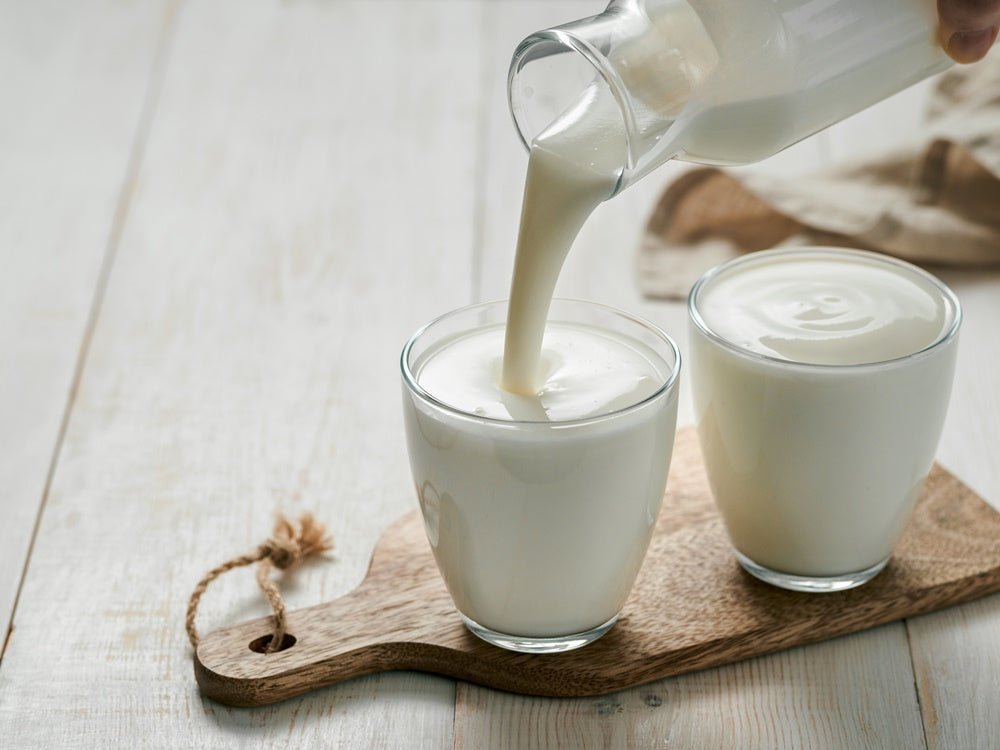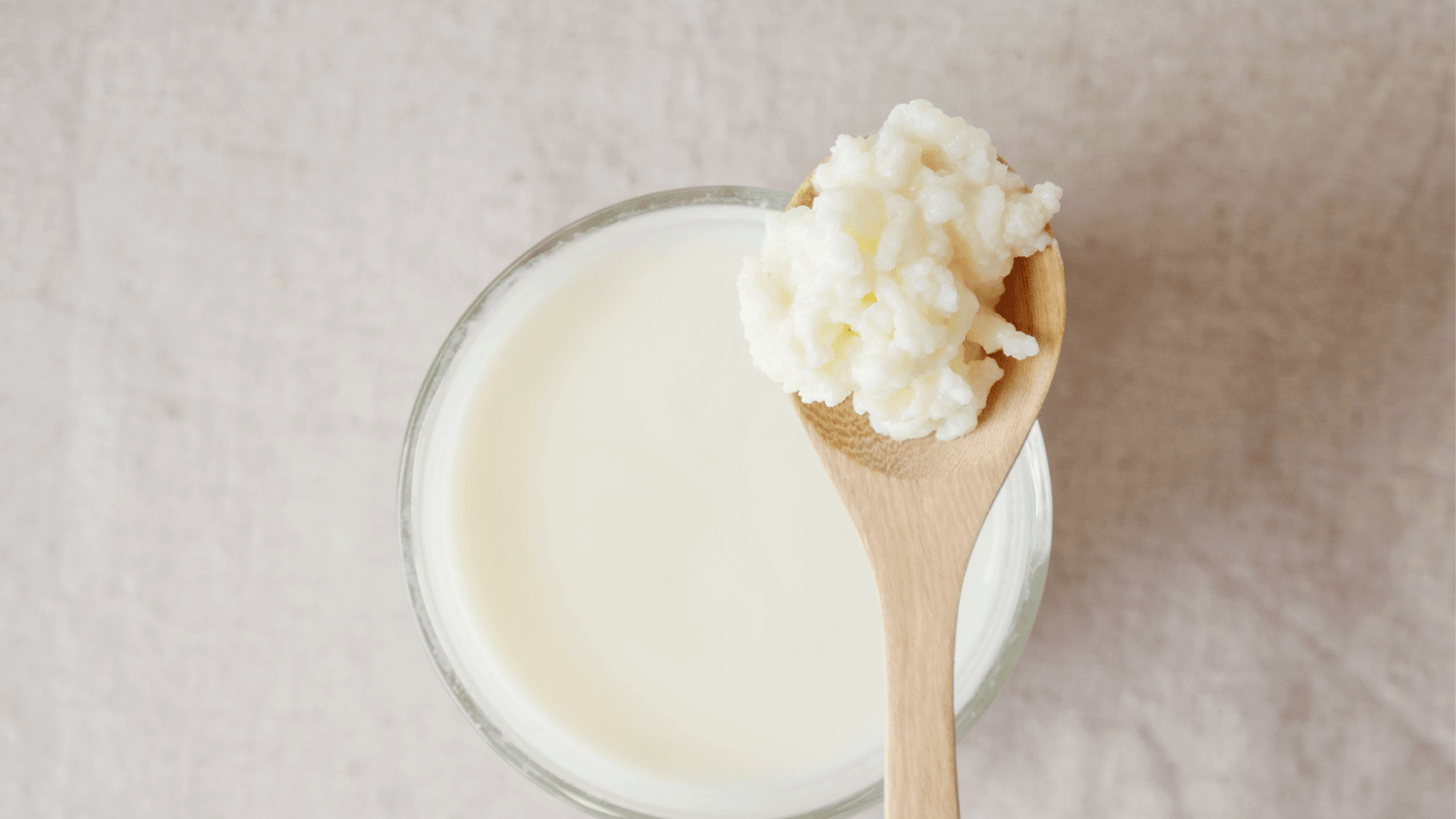Table of contents
I love a wonderful natural yogurt! Actually, at first glance, it's a very simple food and yet it tastes wonderfully creamy, sweet and sour. For me, natural yogurt is part of my daily routine Breakfast , as a sauce or dip for many lunches and sometimes I just enjoy it as a dessert (- don't worry, often I just want a piece of cake).
Here you will find a very simple recipe for making your own yogurt - without any special kitchen equipment and no effort!
Is yogurt actually healthy?
Yogurt is made from milk and contains important nutrients. It is rich in Proteins , some trace elements and contains less sugar as milk (you'll find out why in a moment). The high calcium content in dairy products is particularly well known. It's not the same level everywhere, for example Parmesan has one of the highest levels, but that calcium is also present in yogurt in high doses. We need calcium especially for our health bones and teeth . Therefore it is particularly important in the Childhood , when the bones are built, and also from then on 50th year of age (especially for women) to prevent bone loss and osteoporosis. In order to properly absorb calcium, you also need plenty You will soon find out where to find vitamin D in another blog. Also contains yogurt Vitamin A, riboflavin and iodine , other valuable trace elements. (1)
But what's really special about yogurt is what happens when it's made! Milk is made with certain Bacteria , the lactobacilli, are added and they break down the sugar. This process is called Fermentation . This milk sugar is also known as lactose. lactose is not tolerated by some people and can cause digestive problems. Milk intolerance or lactose intolerance is common and many people try to switch to lactose-free products.
The Lactobacilli So they “feed” on milk sugar when making yoghurt. This means that yogurt hardly has any lactose and is well tolerated by many people with lactose intolerance. Stays with the manufacturing process lactic acid left as “waste” from the lactobacilli and the yoghurt gets its sour taste. (2)
Yoghurt naturally contains hardly any lactose, but is acidic and requires lactobacilli to produce it. Especially healthy for yours Microbiome Yoghurt is characterized by the lactobacilli content! Foods with live bacteria are probiotic and a valuable supplement for your intestinal flora. Probiotics have been proven to have positive influences on the intestines, mood and much more.
Why is homemade yogurt special?
Industrially produced yoghurts are usually produced with a single strain, i.e. one variety, of lactobacilli. For the Intestinal flora but one is possible diverse composition of bacteria healthy. For example, a yogurt that contains four or five different strains of bacteria is far superior to supermarket yogurt. It's a joy for the intestines when a little different bacteria or in different compositions appears every time. The more natural variety , the better. You can achieve this with homemade yogurt! If you make the yoghurt yourself, everything will never be as sterile as in the factory due to the many influences from the environment. In addition, pharmacy probiotics, which we will use here, contain several strains of bacteria. This also increases the chance of yoghurt having different structures. So let’s get started making yogurt! (3)

2 ingredients - that's all you need for your homemade yoghurt.
Ingredients
for approx. 5 glasses of yoghurt
Working time approx. 15 minutes, production time 12 hours
vegetarian, low in lactose, gluten-free
- 1l milk
- approx. 2 capsules of probiotic (available at the pharmacy, with as many live, different strains as possible; a total of approx. 1-2 billion bacteria should be contained in these two capsules)
- Fruit, nuts, seeds for serving
Preparation
In order for the bacteria from the probiotic to work well, they need a warm environment. So you should think carefully about where you leave the yoghurt to ferment. This is quite easy in summer, for example in the warmth of the window. In winter, heating may be suitable, but it shouldn't be too hot - what's pleasant for your skin should also be pleasant for the bacteria. A particularly good trick is to use a cooler bag! To do this, place the yogurt in the bag, add two bottles of warm water and close the cooler bag. The bag insulates well and keeps the yoghurt nice and warm! If you want to be on the safe side, you can also let the yoghurt ripen in your own yoghurt maker or in the oven at 40°C - but the simpler methods also work great!
If you have the opportunity, you can use unpasteurized raw milk. This has live bacteria right from the start, making it even more probiotic. This milk was never boiled and therefore the naturally occurring bacteria were able to survive in it. However, this milk should not be boiled when making yoghurt, otherwise the positive effect will be gone!
First, heat the milk in a pot and stir well so that nothing burns. The milk should become pleasantly lukewarm (approx. 40°, just test it with the back of your hand - the temperature should still be pleasant). Now the milk is ready for the probiotic. If you prefer a thicker yoghurt, you can also let the milk boil and then let it cool down to 40°C.
Remove the pot from the heat and pour the probiotic into the milk: the powder can be added straight away, the capsules have to be opened beforehand and then the contents can be added to the warm milk. Mix everything well so that the bacteria are distributed evenly.
Now just pour the milk into the prepared glasses. Clean jam jars are best. These should be preheated with hot water beforehand. Do not close the yoghurt jars completely because the bacteria need air to work. So only put the lid on lightly. Then place the yoghurt jars in a warm place and let the bacteria work for about 12 hours. When the yogurt bubbles, it's ready. Now close the lid tightly and put the yoghurt in the fridge. The yogurt will keep there for a few days.
It's that easy to make homemade natural yogurt, which is a very special addition to your microbiome! Best enjoyed with seasonal fruit, nuts, seeds and oatmeal for breakfast!

A yoghurt bowl with your favourite toppings: a delicious breakfast or a quick snack.
References
- Münzing-Ruef, Ingeborg: Kursbuch gesunde Ernährung. (7. Auflage) Wilhelm Heyne Verlag GmbH, München 1991.
- Ellix Katz, Sandor: Wild Fermentation. Chelsea Green Publishing, White River Junction 2003.
- Bäckhed F, Fraser CM, Ringel Y,et al. Defining a healthy human gut microbiome: current concepts, future directions, and clinical applications. Cell Host Microbe. 2012;12(5):611-22







